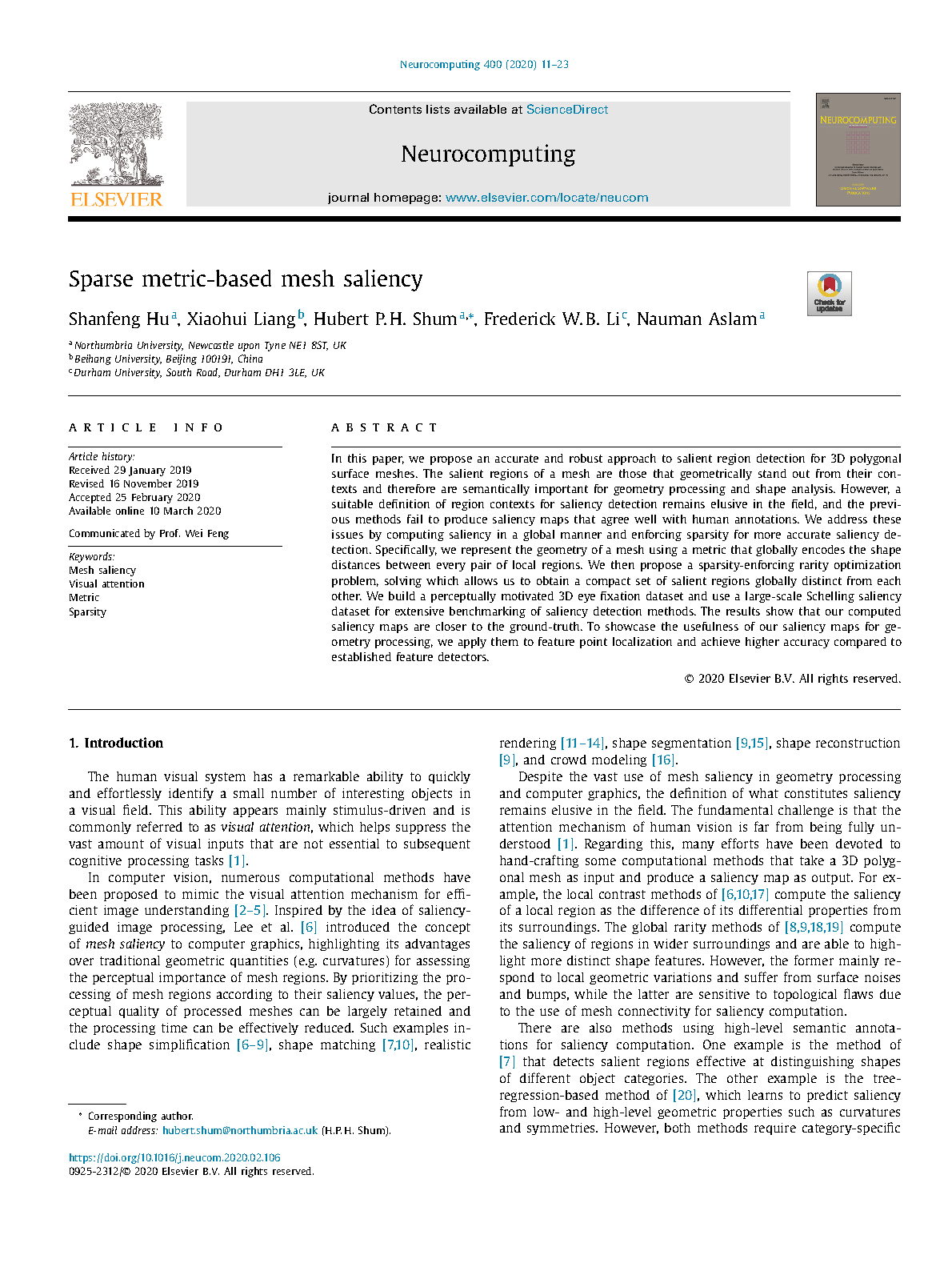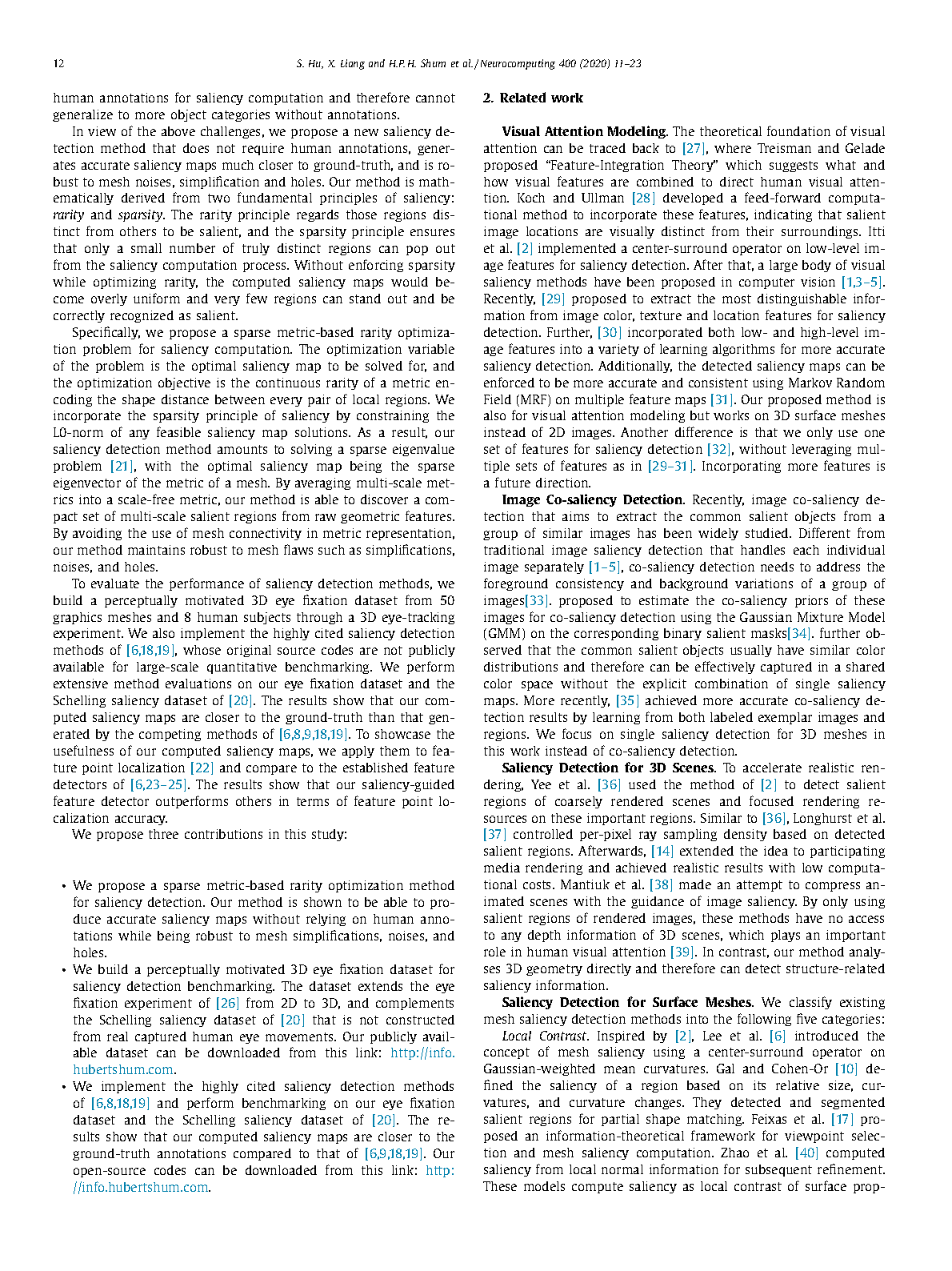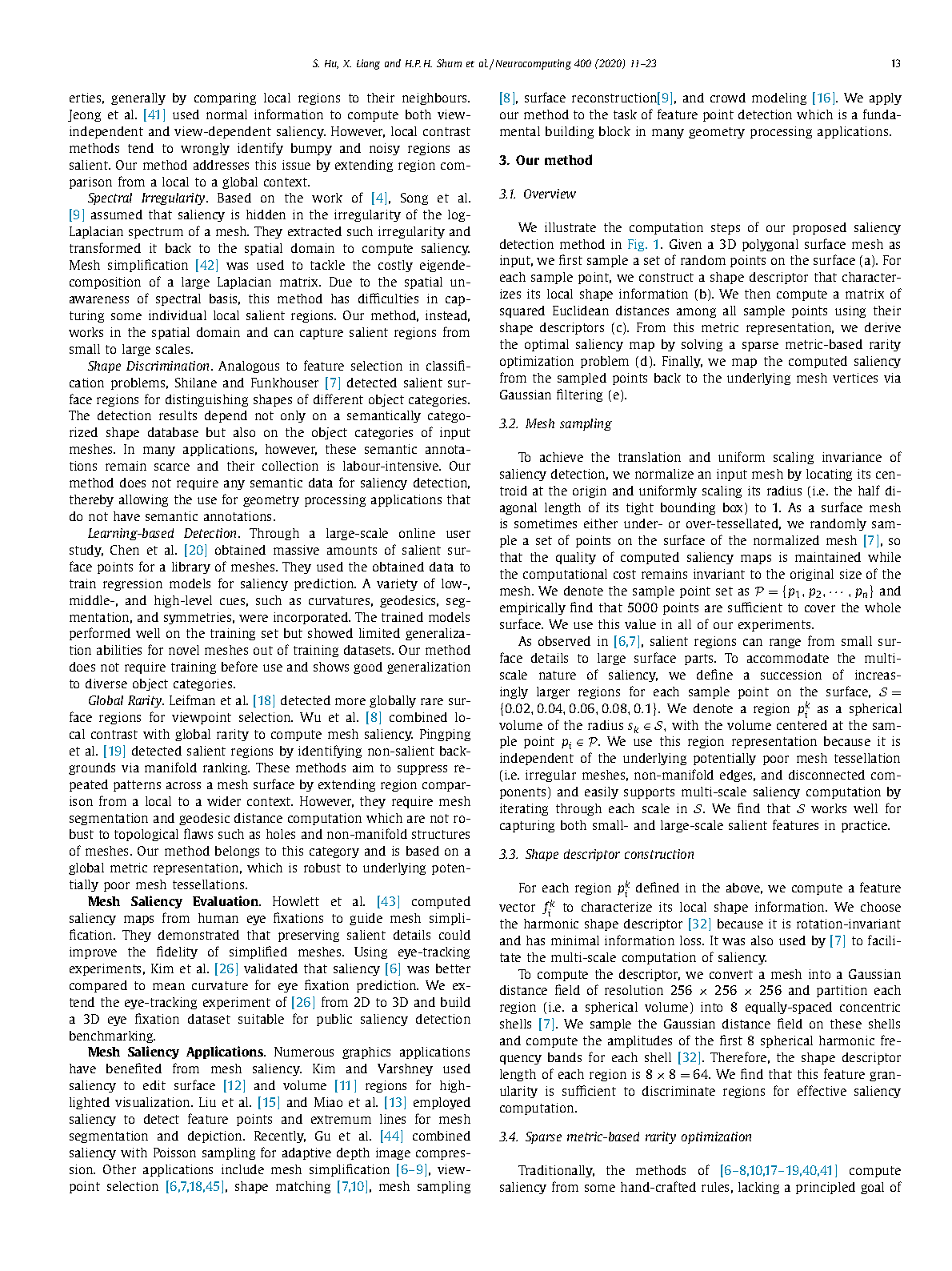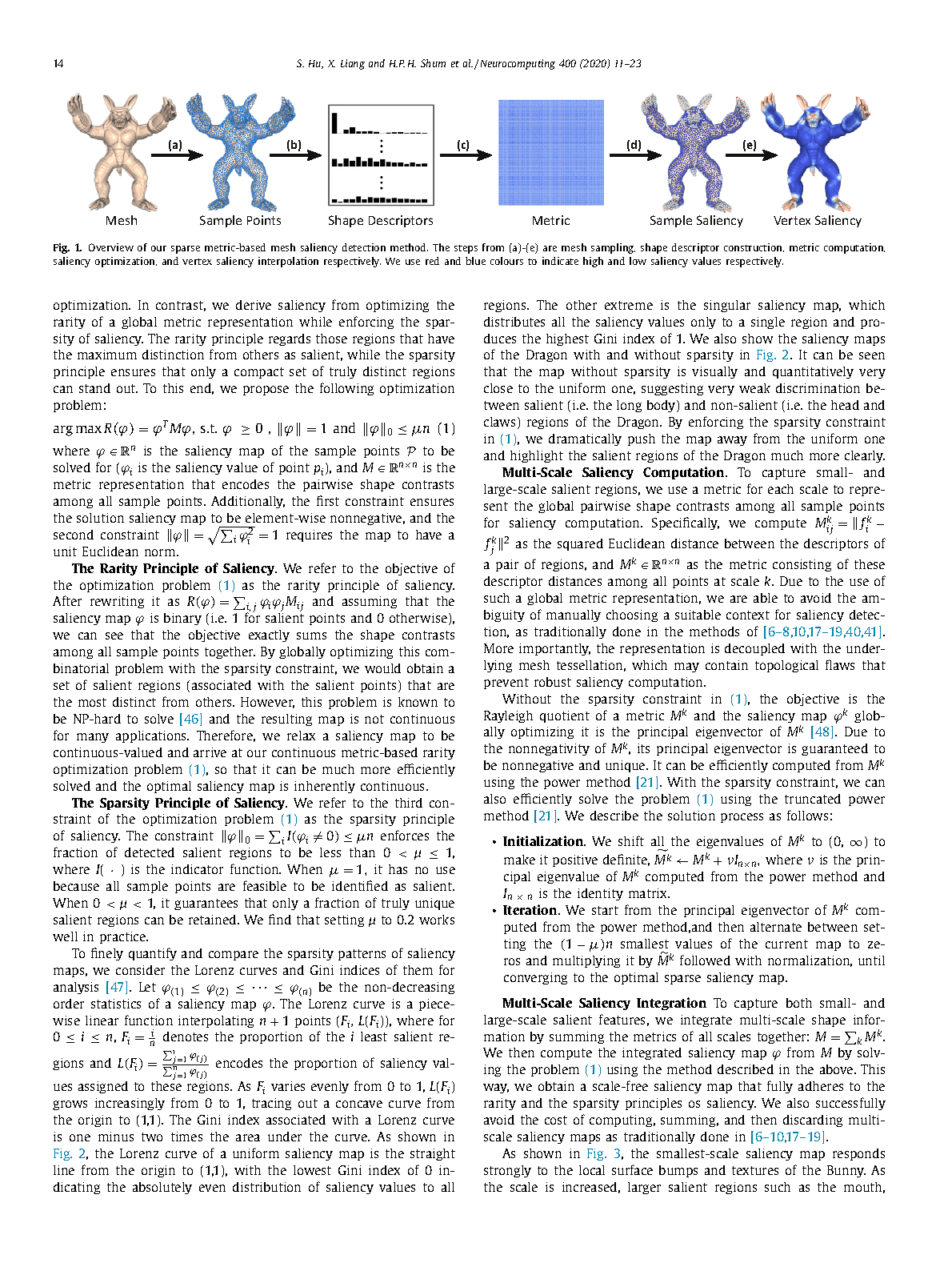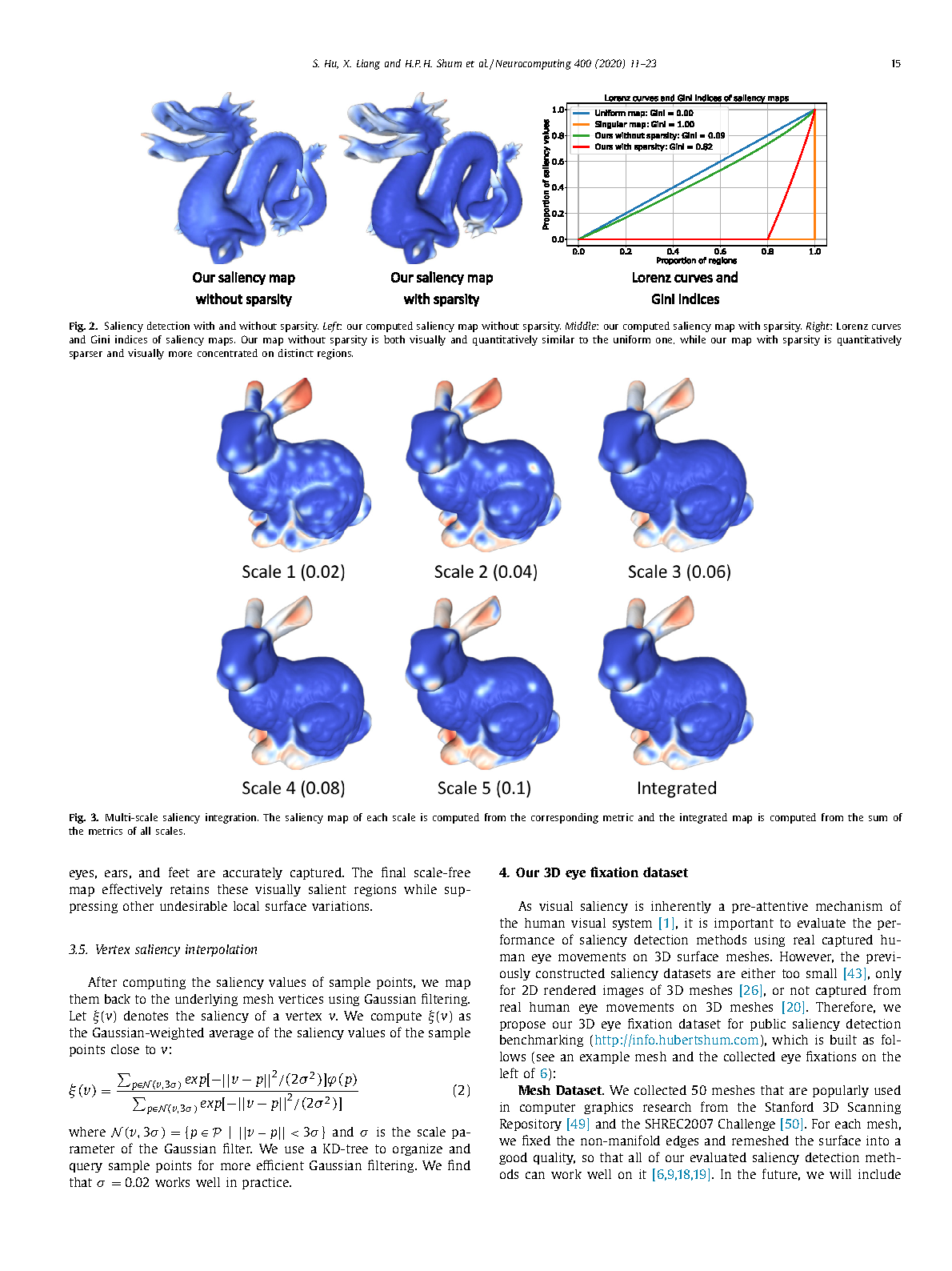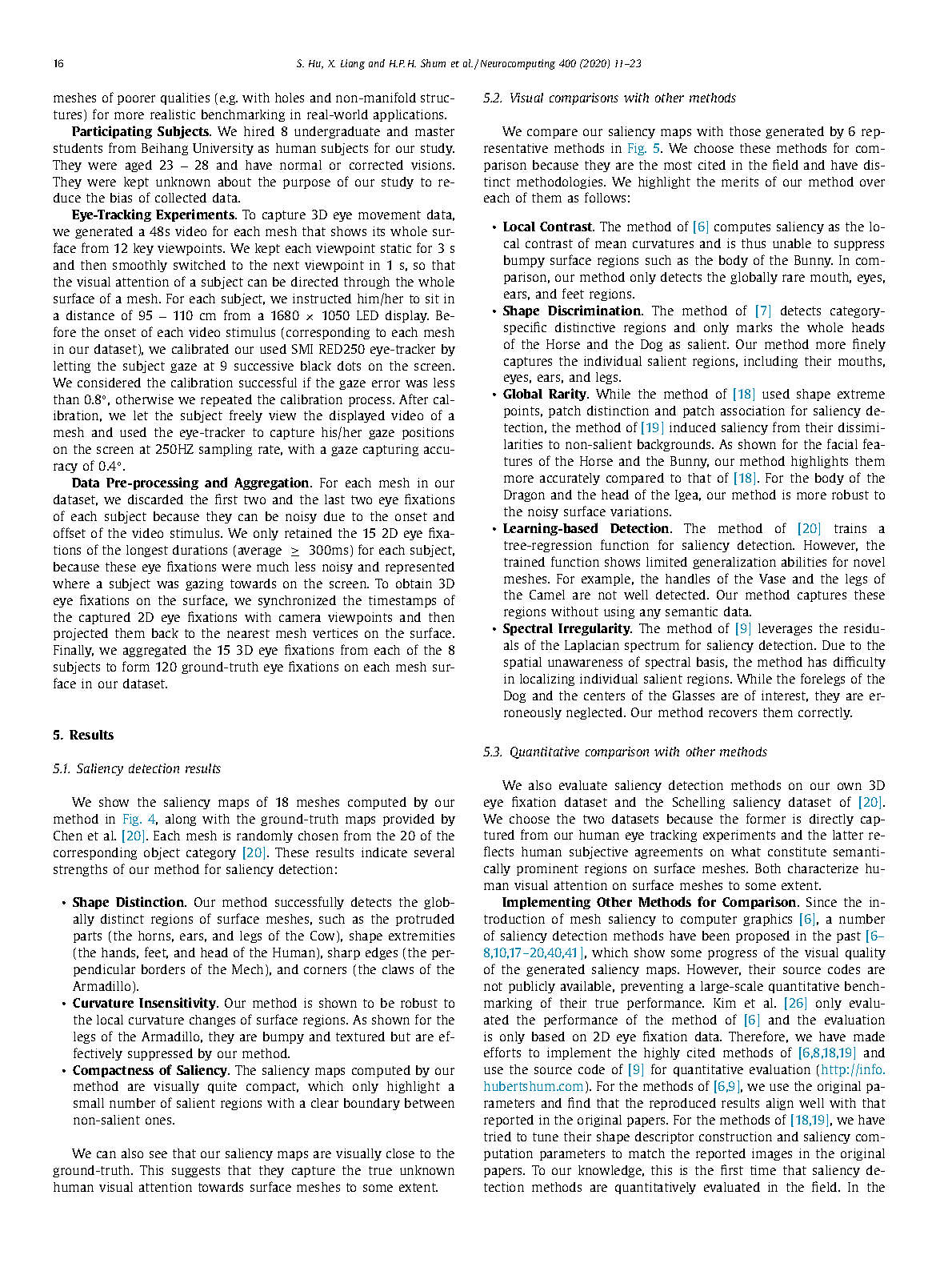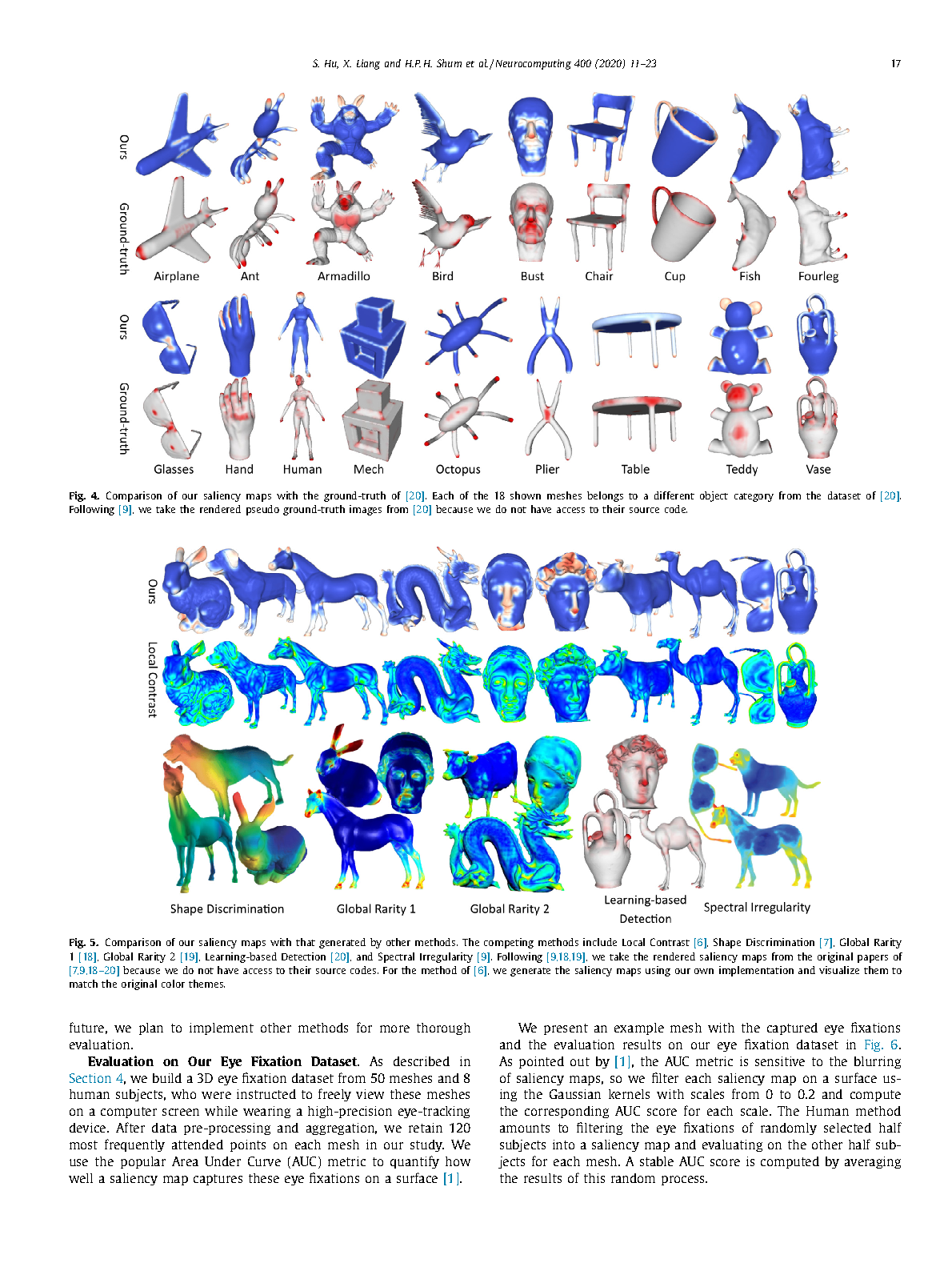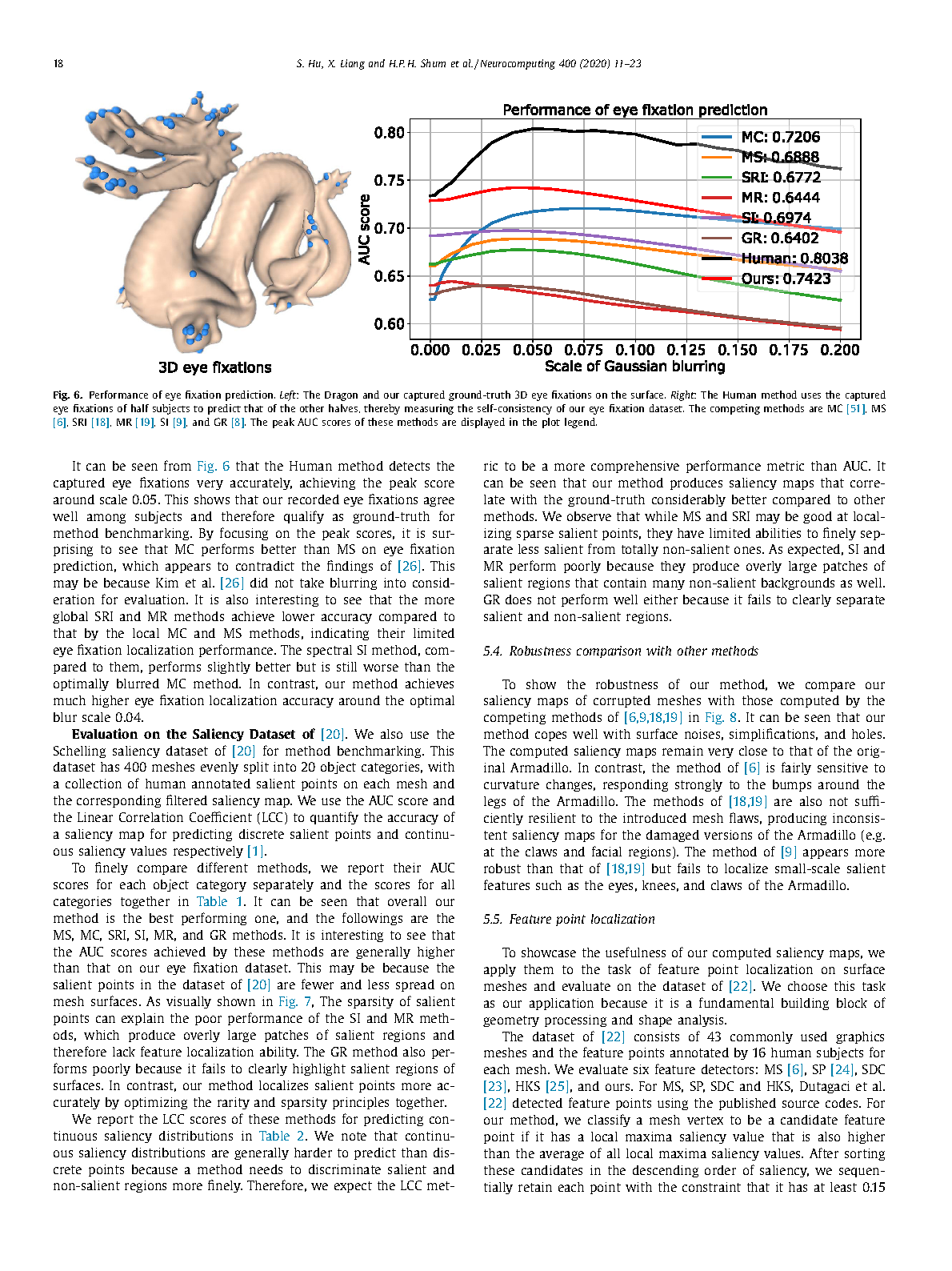Sparse Metric-Based Mesh Saliency
Shanfeng Hu, Xiaohui Liang, Hubert P. H. Shum, Frederick W. B. Li and Nauman Aslam
Neurocomputing, 2020
Impact Factor: 6.5† Top 25% Journal in Computer Science, Artificial Intelligence† Citation: 13#

Abstract
In this paper, we propose an accurate and robust approach to salient region detection for 3D polygonal surface meshes. The salient regions of a mesh are those that geometrically stand out from their contexts and therefore are semantically important for geometry processing and shape analysis. However, a suitable definition of region contexts for saliency detection remains elusive in the field, and the previous methods fail to produce saliency maps that agree well with human annotations. We address these issues by computing saliency in a global manner and enforcing sparsity for more accurate saliency detection. Specifically, we represent the geometry of a mesh using a metric that globally en- codes the shape distances between every pair of local regions. We then propose a sparsity-enforcing rarity optimization problem, solving which allows us to obtain a compact set of salient regions globally distinct from each other. We build a perceptually motivated 3D eye fixation dataset and use a large-scale Schelling saliency dataset for extensive benchmarking of saliency detection methods. The results show that our computed saliency maps are closer to the ground-truth. To showcase the usefulness of our saliency maps for geometry processing, we apply them to feature point localization and achieve higher accuracy compared to established feature detectors.
Cite This Research
Supporting Grants
Royal Society International Exchanges (Ref: IES\R2\181024): £12,000, Principal Investigator
Received from The Royal Society, UK, 2019-2022
Project Page
Erasmus Mundus Action 2 Programme (Ref: 2014-0861/001-001): €3.03 million, Northumbria University Funding Management Leader (PI: Prof. Nauman Aslam)
Received from Erasmus Mundus, 2015-2018
Project Page
